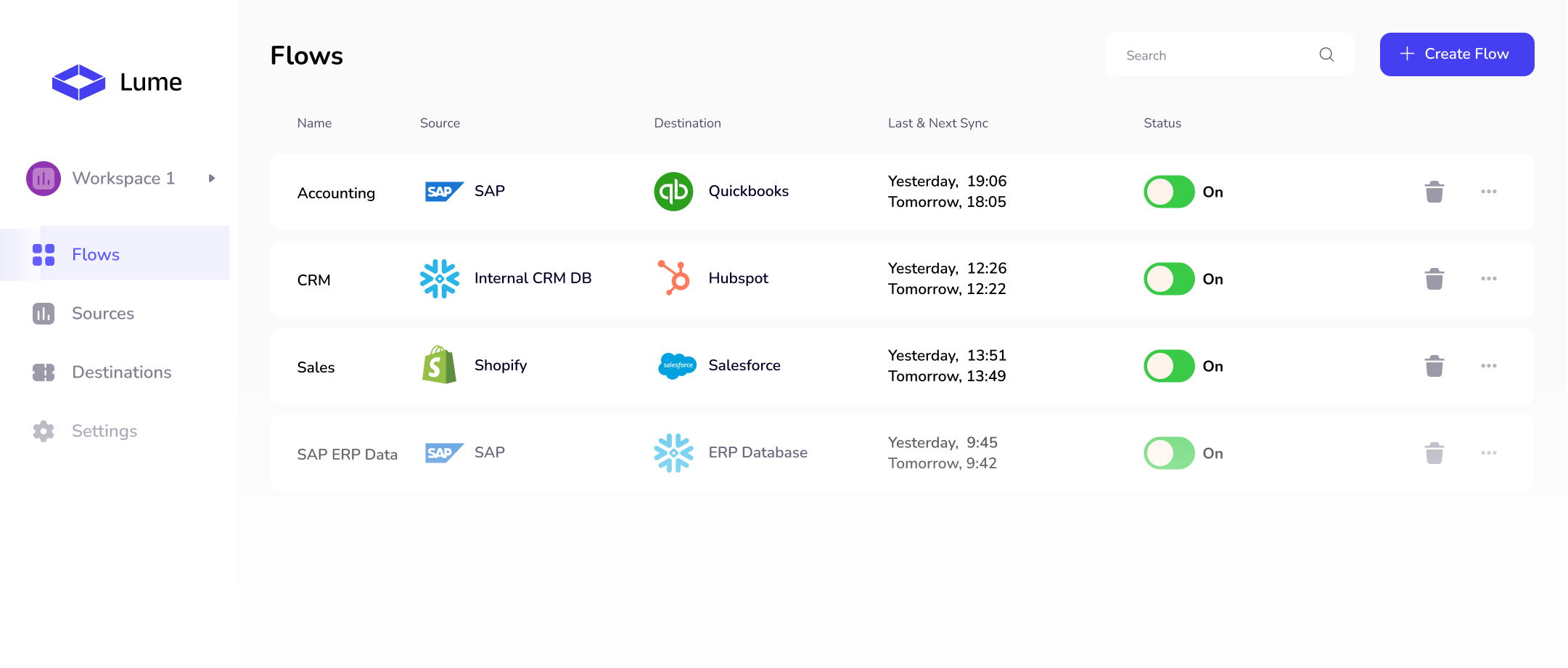Unlocking the Power of Automation: Lume's AI-Powered Data Integration Revolution
In a world driven by data, companies face the formidable challenge of efficiently integrating and transforming data from diverse sources into actionable insights. The process is often time-consuming, resource-intensive, and fraught with complexities. But what if there was a solution that could streamline this process, allowing businesses to focus on their core value proposition? Meet Lume, the innovative startup founded in 2022 by a trio of computer science enthusiasts from Stanford University. In this article, we will delve deep into Lume's mission, founders, and their groundbreaking AI-powered data integration platform. Join us as we explore how Lume is poised to revolutionize the data integration landscape.
You might also be interested in: CreatorML and How It Works

Who Are the Visionaries Behind Lume?
The journey of any startup is inherently tied to the vision and expertise of its founders. Lume is no exception. The company was founded by three dynamic individuals, each bringing a unique set of skills and experiences to the table.
Robert Ross: Co-Founder Extraordinaire
Stanford CS Alumnus
Robert Ross, one of Lume's co-founders, is no stranger to the world of technology and innovation. Armed with a Stanford computer science degree, Robert has been an integral part of the startup ecosystem, previously contributing to the success of another venture, W23. With a strong foundation in computer science, Robert brings technical prowess to Lume.
Nicolas Machado: The AI Enthusiast
Stanford CS AI, Brazilian
Nicolas Machado, another co-founder of Lume, is a true AI aficionado. His background in artificial intelligence, coupled with a Stanford CS AI education, positions him as a driving force behind the company's AI-driven solutions. Hailing from Brazil, Nicolas adds an international perspective to Lume's diverse team.
Nebyou Zewde: Bridging the Gap
Stanford CS AI, Ethiopian
Completing the trio is Nebyou Zewde, a co-founder with a background in computer science and artificial intelligence from Stanford. Nebyou's Ethiopian heritage adds to the multicultural flavor of Lume's founding team. His expertise in AI is instrumental in shaping the company's innovative approach to data integration.
Lume's Mission: Empowering Companies Through AI-Powered Data Integration
The Lume team is on a mission to transform the way companies handle data integrations. Their goal is clear: empower organizations to focus on delivering their core value proposition rather than spending excessive time and resources on data integrations and transformations. But how does Lume plan to achieve this ambitious mission?
What Is the Problem Lume Is Solving?
Problem: Manual Data Transformation Woes
Engineers often find themselves mired in the laborious and time-consuming process of manually transforming data for custom integrations. Alternatively, they may resort to expensive consulting firms to tackle the same problem. The crux of the issue lies in dynamic schemas, which vary from client to client or app to app. This necessitates the building and maintenance of custom integration pipelines one by one, consuming valuable days, weeks, and even months. The status quo is unsustainable.
How Does Lume Address This Challenge?
Solution: The AI-Powered Lume Advantage
Lume brings forth a revolutionary solution by harnessing the power of AI to automate data transformation between any start and end schema. This transformed data is seamlessly directed to the intended destination. The cornerstone of this solution is a no-code platform that allows businesses to effortlessly construct and maintain custom data integrations.
Whether you are looking to unify multiple data sources into a single internal schema or connect to third-party apps without the need for manual mapping, Lume has you covered. The platform offers automated transformations, data delivery, backtesting, data quality checks, and version control. In essence, it liberates engineers from the tedious task of wrangling and manually mapping data, enabling them to channel their efforts towards delivering core value to customers.

How Does Lume Work Its Magic?
The Lume Workflow Unveiled
Lume's workflow is elegantly simple, yet incredibly powerful. Here's how it works:
Connect Your Custom Schemas and Authenticate: Begin by connecting your custom schemas and authenticating into your desired applications.
AI-Driven Schema Transformations: Lume's AI system comes into play, creating transformations between any two schemas. This can encompass everything from internal schemas to structured third-party applications.
Data Validation and Delivery: Once the transformed data is generated, it undergoes validation. Upon validation, Lume takes charge and directs the correct data to your specified destination. Notably, it can connect seamlessly to your data warehouse, leveraging its compute capabilities to keep your data in-house.
What Are the Common Use Cases for Lume?
Unlocking Potential Across Industries
Lume's versatility extends to a multitude of use cases across various industries. Let's explore some of the common scenarios where Lume can make a significant impact:
Internal Data Unification
Example: Creating a unified schema between Salesforce, Hubspot, Quickbooks, and Pipedrive.
In an increasingly interconnected business landscape, companies often find themselves dealing with disparate data sources. Lume enables the seamless transformation and unification of these sources into a single, coherent internal schema. This harmonizes data across departments and systems, unlocking valuable insights.
External SaaS Integration
Example: Enriching CRM data from multiple sources before sending it to your BI tool.
As organizations adopt an array of Software-as-a-Service (SaaS) applications to meet their diverse needs, data silos become a common problem. Lume steps in to bridge these gaps by customizing data syncs between different SaaS applications. It ensures that your CRM data from multiple sources is enriched and ready for analysis in your Business Intelligence (BI) tool.
Onboarding Efficiency
Example: Consulting firms mapping each new client's unique ERP schemas to their internal ontology on Snowflake.
For consulting firms and businesses with a client-centric approach, the onboarding process can be a bottleneck. Lume simplifies this by mapping prospective client data to align with your product's input schema. This accelerates onboarding, enabling faster access to critical information.
Seamless Migration
Example: Creating custom integration pipelines between competitor products and yours.
When transitioning from one product or service to another, data migration can be a daunting task. Lume facilitates this transition by crafting custom integration pipelines. Whether you're switching CRMs or adopting a new productivity tool, Lume ensures a smooth transition, minimizing disruptions.

The Road Ahead: Lume's Vision for the Future
As Lume continues to make waves in the realm of data integration, the future appears promising. The company is committed to enhancing its AI-driven platform, making data integration even more effortless and efficient. They aim to expand their reach across industries, helping businesses of all sizes harness the power of automation to gain a competitive edge.
With Lume's innovative approach and a team of dedicated founders, the landscape of data integration is undergoing a transformation. Businesses no longer need to grapple with the complexities of manual data wrangling. Lume has opened the door to a new era of streamlined, AI-powered data integration, where companies can focus on what truly matters: delivering value to their customers.
In conclusion, Lume's journey is not just about revolutionizing data integration; it's about enabling businesses to thrive in a data-driven world. With their vision, expertise, and cutting-edge technology, Nicolas Machado, Nebyou Zewde, and Robert Ross are leading the charge towards a brighter, more efficient future for data integration. As the startup continues to evolve and innovate, it's poised to leave an indelible mark on the world of technology and data management.

